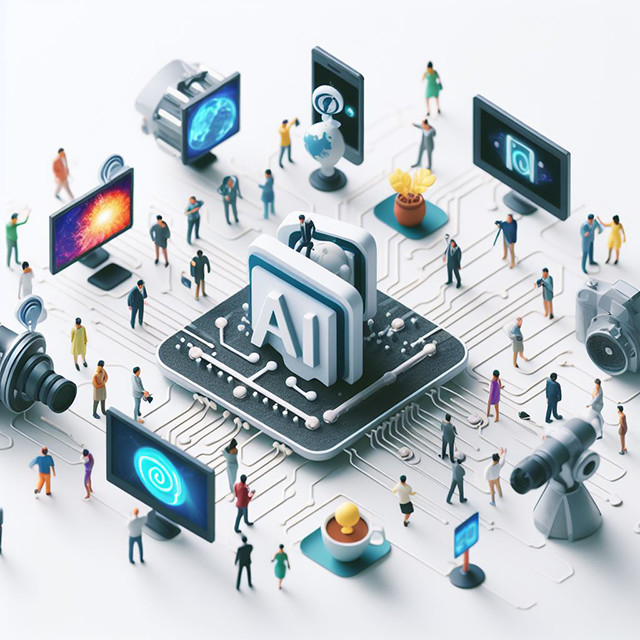NotebookLM and the Dream of a New Library of Alexandria
The Power of NotebookLM: An AI-Powered Research and Note-Taking Companion
NotebookLM is an AI-powered research and note-taking online tool, developed by Google, that allows users to interact with their documents. At its core, NotebookLM functions by leveraging advanced Artificial Intelligence capabilities to provide a dynamic and conversational interface for users' uploaded content. More than just a digital notebook, it represents a bold attempt to reimagine how we interact with knowledge, sparking comparisons to the dream of a modern Library of Alexandria—one where the world's information is not lost but restructured, personalized, and made accessible through AI.
How NotebookLM Works Inside and Its AI Backbone
The fundamental backbone of NotebookLM is Google Gemini, a Large Language Model (LLM) that provides the intelligence for NotebookLM to process, understand, and generate responses based on the documents a user feeds it. While Google has not disclosed the full technical architecture, we can infer much from what is known about LLM-based systems.
- Ingestion and Processing: When you upload documents (PDFs, Google Docs, text), NotebookLM processes this unstructured data, chunking it into manageable segments and embedding it into a vector database. This allows semantic search—retrieving information by meaning rather than keywords.
- Language Model Interaction: Gemini acts as the conversational interface, drawing upon both its pre-training and your uploaded sources to answer questions, summarize, or generate structured insights.
- Grounded Generation: Unlike freeform chatbots, NotebookLM constrains its responses to reference your sources, reducing hallucinations and providing citations back to documents.
- Generative Capabilities: The system can create summaries, explanations, study guides, and even visuals like charts or infographics, relying on Gemini’s multimodal abilities.
Branches of AI Applied by NotebookLM
- Natural Language Processing (NLP): Core to how NotebookLM interprets your questions and your documents.
- Large Language Models (LLMs): Google Gemini provides the reasoning and generative core.
- Generative AI: Enables summaries, paraphrases, and visuals (via Gemini’s image generation, sometimes described as "Nano Banana").
- Machine Learning (ML): NotebookLM builds on supervised and unsupervised learning, refined through reinforcement learning for better output alignment.
- Retrieval-Augmented Generation (RAG): A critical layer that combines search with generation, grounding AI outputs in user-provided material.
Historical Parallels: The Dream of Alexandria
The Library of Alexandria symbolizes humanity’s desire to centralize knowledge. Its destruction is often invoked as the greatest cultural loss in history. NotebookLM revives that aspiration in a digital form: instead of papyrus scrolls, vast corpora of PDFs, notes, and articles. Yet copyright, fragmentation, and data silos threaten to play the role of fire once again. Without legal clarity and open access, the dream of a universal AI-powered library remains incomplete.
Capabilities of NotebookLM
- Document Interaction: Users can query their documents conversationally, extracting answers that would take hours to locate manually.
- Summarization: Long research papers or meeting transcripts are distilled into concise, structured notes.
- Contextual Understanding: With good prompting, NotebookLM adapts tone, level of detail, or format to user needs (e.g., summaries for executives vs. technical breakdowns for researchers).
- Visual Generation: Through Gemini’s multimodal engine, it can generate infographics and charts from text prompts.
- Integration with Google Workspace: Fits seamlessly into existing workflows for Google Docs, Sheets, and Drive.
- Ease of Use: Designed for non-technical users—no setup, coding, or training required.
Limitations and Challenges
- Hallucinations: Despite grounding, NotebookLM can still fabricate information if sources are weak.
- Bias: Like any LLM, it inherits biases from training data.
- Context Limits: Very large document sets may not be fully indexed.
- Privacy: Uploading sensitive data to Google’s servers raises legitimate concerns.
- Copyright: Sharing notebooks publicly could infringe rights if copyrighted sources are uploaded.
- Explainability: As with most LLMs, the reasoning chain is opaque.
Use Cases in Practice
NotebookLM is versatile, with clear applications across domains:
- Students: Upload textbooks and lecture notes, then generate study guides or quiz questions.
- Journalists: Organize interview transcripts, background reports, and articles into one searchable notebook.
- Researchers: Summarize and cross-compare multiple scientific papers, with sources cited directly.
- Business Teams: Generate executive summaries from meeting notes, reports, or compliance documents.
- Medical Professionals: Analyze patient guidelines and research in a structured way, with citations.
NotebookLM vs Claude’s Artifacts vs ChatGPT Projects
NotebookLM is not the only system experimenting with structured AI workspaces. Two key competitors offer alternative visions:
- Claude’s Artifacts: A feature in Anthropic’s Claude where generated content (essays, code, diagrams) is saved as interactive "artifacts" beside the chat. Strong for transparency but less source-grounded than NotebookLM.
- ChatGPT Projects: OpenAI’s approach allows users to organize multiple chats, documents, and outputs into one workspace. More flexible but again not tied strictly to sources—risking hallucinations unless paired with custom knowledge.
- NotebookLM: Distinguishes itself by source grounding—everything links back to your uploaded material, offering greater reliability in research-heavy contexts.
A simple comparison:
| Feature | NotebookLM | Claude Artifacts | ChatGPT Projects |
|---|---|---|---|
| Source Grounding | Yes, with citations | No | Partial (with custom knowledge) |
| Organization | Notebook structure | Artifacts beside chat | Project folders |
| Collaboration | Limited (Google ecosystem) | Not yet | Possible with team plans |
| Best For | Research & note-taking | Creative outputs | General project work |
Copyright and Ethical Concerns
The biggest obstacle to a “new Alexandria” is not technical but legal. Uploading and sharing copyrighted PDFs raises infringement risks. Courts are still debating whether LLM training counts as “fair use.” While Google emphasizes private, source-grounded use, public sharing of notebooks remains unresolved. Without frameworks for licensing, the collective knowledge dream is throttled.
Future Outlook
NotebookLM is an ambitious experiment in augmenting human intelligence. It points toward a future where personalized libraries of curated knowledge become conversational and interactive. But to fulfill the vision of a modern Library of Alexandria, three hurdles remain: scaling context windows, ensuring privacy, and resolving copyright conflicts. If those barriers fall, AI could indeed resurrect the lost dream of universal knowledge—not as scrolls in a chamber, but as living, interactive notebooks accessible to all.



Comments
Post a Comment